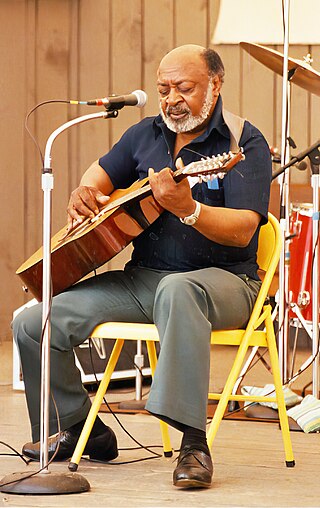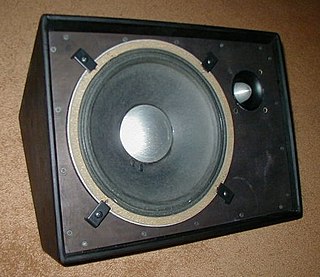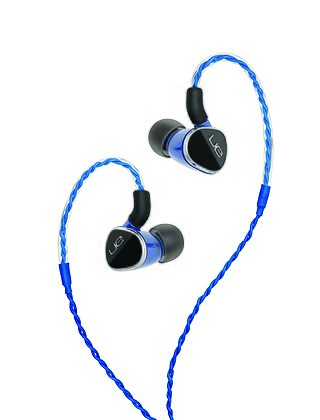In telecommunications and professional audio, a balanced line or balanced signal pair is an electrical circuit consisting of two conductors of the same type, both of which have equal impedances along their lengths, to ground, and to other circuits. The primary advantage of the balanced line format is good rejection of common-mode noise and interference when fed to a differential device such as a transformer or differential amplifier.

A microphone, colloquially called a mic, or mike, is a transducer that converts sound into an electrical signal. Microphones are used in many applications such as telephones, hearing aids, public address systems for concert halls and public events, motion picture production, live and recorded audio engineering, sound recording, two-way radios, megaphones, and radio and television broadcasting. They are also used in computers and other electronic devices, such as mobile phones, for recording sounds, speech recognition, VoIP, and other purposes, such as ultrasonic sensors or knock sensors.

Headphones are a pair of small loudspeaker drivers worn on or around the head over a user's ears. They are electroacoustic transducers, which convert an electrical signal to a corresponding sound. Headphones let a single user listen to an audio source privately, in contrast to a loudspeaker, which emits sound into the open air for anyone nearby to hear. Headphones are also known as earphones or, colloquially, cans. Circumaural and supra-aural headphones use a band over the top of the head to hold the drivers in place. Another type, known as earbuds or earpieces, consists of individual units that plug into the user's ear canal. A third type are bone conduction headphones, which typically wrap around the back of the head and rest in front of the ear canal, leaving the ear canal open. In the context of telecommunication, a headset is a combination of a headphone and microphone.

A mixing console or mixing desk is an electronic device for mixing audio signals, used in sound recording and reproduction and sound reinforcement systems. Inputs to the console include microphones, signals from electric or electronic instruments, or recorded sounds. Mixers may control analog or digital signals. The modified signals are summed to produce the combined output signals, which can then be broadcast, amplified through a sound reinforcement system or recorded.
Balanced audio is a method of interconnecting audio equipment using balanced interfaces. This type of connection is very important in sound recording and production because it allows the use of long cables while reducing susceptibility to external noise caused by electromagnetic interference. The balanced interface guarantees that induced noise appears as common-mode voltages at the receiver which can be rejected by a differential device.

A hearing aid is a device designed to improve hearing by making sound audible to a person with hearing loss. Hearing aids are classified as medical devices in most countries, and regulated by the respective regulations. Small audio amplifiers such as personal sound amplification products (PSAPs) or other plain sound reinforcing systems cannot be sold as "hearing aids".

A sound reinforcement system is the combination of microphones, signal processors, amplifiers, and loudspeakers in enclosures all controlled by a mixing console that makes live or pre-recorded sounds louder and may also distribute those sounds to a larger or more distant audience. In many situations, a sound reinforcement system is also used to enhance or alter the sound of the sources on the stage, typically by using electronic effects, such as reverb, as opposed to simply amplifying the sources unaltered.

An earplug is a device that is inserted in the ear canal to protect the user's ears from loud noises, intrusion of water, foreign bodies, dust or excessive wind. Since they reduce the sound volume, earplugs may prevent hearing loss and tinnitus, in some causes.
Shure Incorporated is an audio products corporation headquartered in the USA. It was founded by Sidney N. Shure in Chicago, Illinois, in 1925 as a supplier of radio parts kits. The company became a consumer and professional audio-electronics manufacturer of microphones, wireless microphone systems, phonograph cartridges, discussion systems, mixers, and digital signal processing. The company also manufactures listening products, including headphones, high-end earphones, and personal monitor systems.

Ultimate Ears is an American custom in-ear monitor (IEM), speaker, and earphone manufacturer based in Irvine and Newark, California, United States.

The Shure SM58 is a professional cardioid dynamic microphone, commonly used in live vocal applications. Produced since 1966 by Shure Incorporated, it has built a reputation among musicians for its durability and sound, and is still the industry standard for live vocal performance microphones. The SM58 is the most popular live vocal microphone in the world. It is a development of the SM57 microphone, which is another industry standard for both live and recorded music. In both cases, SM stands for studio microphone.

A wireless microphone, or cordless microphone, is a microphone without a physical cable connecting it directly to the sound recording or amplifying equipment with which it is associated. Also known as a radio microphone, it has a small, battery-powered radio transmitter in the microphone body, which transmits the audio signal from the microphone by radio waves to a nearby receiver unit, which recovers the audio. The other audio equipment is connected to the receiver unit by cable. In one type the transmitter is contained within the handheld microphone body. In another type the transmitter is contained within a separate unit called a "bodypack", usually clipped to the user's belt or concealed under their clothes. The bodypack is connected by wire to a "lavalier microphone" or "lav", a headset or earset microphone, or another wired microphone. Most bodypack designs also support a wired instrument connection. Wireless microphones are widely used in the entertainment industry, television broadcasting, and public speaking to allow public speakers, interviewers, performers, and entertainers to move about freely while using a microphone without requiring a cable attached to the microphone.
Westone is an American manufacturer of custom earpieces for the hearing healthcare market, hearing protection products, custom communications earpieces, clinical and audiological supplies, musicians hearing protection and in-ear monitors for professional musicians and audiophiles.

Mobile radio or mobiles refer to wireless communications systems and devices which are based on radio frequencies, and where the path of communications is movable on either end. There are a variety of views about what constitutes mobile equipment. For US licensing purposes, mobiles may include hand-carried,, equipment. An obsolete term is radiophone.
Audio signal flow is the path an audio signal takes from source to output. The concept of audio signal flow is closely related to the concept of audio gain staging; each component in the signal flow can be thought of as a gain stage.

A stage monitor system is a set of performer-facing loudspeakers called monitor speakers, stage monitors, floor monitors, wedges, or foldbacks on stage during live music performances in which a sound reinforcement system is used to amplify a performance for the audience. The monitor system allows musicians to hear themselves and fellow band members clearly.
Interruptible foldback (IFB), also known as interrupted foldback, interruptible feedback, or interrupt for broadcast, is a monitoring and cueing system used in television, filmmaking, video production, and radio broadcast for one-way communication from the director or assistant director to on-air talent or a remote location. The names are backronyms for the Telex IFB-XXX model line. Less common names for the system include program cue interrupt (PCI) and switched talkback. IFB is often facilitated using an earpiece that on-air persons wear to get cues, feedback or direction from their control rooms. The earpiece itself may also be referred to as an IFB. Sometimes IFB is accomplished by the director talking to off-camera personnel who visually cue the on-camera talent.
Jerry Harvey is an American sound engineer best known for inventing, along with Karl Cartwright, a series of customized dual-speaker in-ear monitors in 1995. He founded Ultimate Ears that same year, and in 2007, founded JH Audio. He has served as the sound engineer for artists as varied as Van Halen, Kiss, Morrissey, the Cult, the Knack, David Lee Roth, Mötley Crüe, k.d. lang, and Linkin Park.

UE 900 and UE 900S are noise-isolating earphones manufactured and marketed by Logitech, under the Ultimate Ears brand. They are aimed at listeners who prefer neutral sound signature. They are rated as one of the best ear phones in its price range by CNET.
Talkback, or in-eartalkback, is a device used by directors and producers to talk directly to the anchor or the host of the show. This device enables the show directors to send out commands, instructions, content information and even the complete script to the anchors or hosts of the show. Talkback consists of an earpiece made of silicon or foam bud that sits just inside the left or right ear, attached to a curly or straight acoustic tube that goes around and behind the ear, then down the back of the neck to a wireless receiver. There is an optional collar clip to hold the cable in place, and hair/clothing can be used to hide the kit as much as possible. The volume of the speech coming through the earpiece can be adjusted. The wireless receiver gets signals from a transmitter. An audio mixer placed in production control rooms (PCR) would be wired to the transmitter. The input for the audio mixer would come from a microphone in which the director speaks and sends out information. This information is carried to the talkback and the host follows the instruction.
















